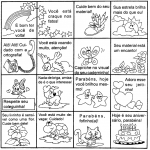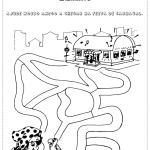Have you ever heard the term Mindfulness?
Mindfulness, basically, is the term used by the scientific community to call the act of inattention, this state of consciousness we are in with the body in one place but the mind in another, and we're constantly living on autopilot, it's the opposite of a state of consciousness called mindful.
During school time, understanding and working on this topic is very important, as it is quite common for tiredness, routine, difficult subjects, among other factors, cause a state of inattention in the student, thus affecting their learning and performance in classroom.
Below, we'll leave some tips on how to work mindfulness with children. We hope you enjoy:
1. practice to teach
If the teacher has this experience and is aware of its benefits, it becomes easier to pass it on to students.
2. create a routine
Practicing mindfulness daily and always at the same times – after breaks, for example – helps to incorporate the habit.
3. use a beep
Starting the meditation with a “meditation bell” – which starts with a more shrill sound and gradually fades out – can be an interesting way of signaling that the practice is about to begin. This link, from the Washington Mindfulness Community website, offers virtual bell sounds. Free mobile apps are another option for choosing different bells, such as Mindfulness Bell and Conscious, both for Android.
4. prepare the environment
Inviting students to leave their tables and sit on the floor in a circle can be a way to show that the activity is special. They should avoid leaving the room or having side conversations only for a short time.
5. Share the experience
Encouraging students to report how they felt during the process, pointing out aspects that distracted or challenged them, is a way to improve the practice.
6. for small children
One way to help them pay attention to their breathing and body movements is to have them lie on their back with a stuffed animal placed on their belly. Then, they are asked to observe, for a period of time, how the animal rises and falls when they inhale and exhale.
Step-by-step 2-minute daily mindfulness instruction* for children:
1. "Sit with an upright posture and eyes closed, being quiet and calm."
2. "Pay attention to the sound you're going to hear until it's completely over."
3. "Ring the 'meditation bell' or leave the task to a student."
4. "Raise your arm when you're no longer hearing the sound."
5. After everyone raises their hands: "Now, slowly and paying attention to your movement, place your arm on your chest or over your stomach
and just feel your breath."
6. “Inhale”, “exhale” – these words help not to scatter.
7. "Ring the bell to finish."
*The guidelines are for a 2 minute practice – one minute of listening and one minute of breathing. The teacher can extend the practice and include more steps according to the adaptation of the class and the age of the students.
Sources: Megan Cowan, co-director of Mindful Schools, California (www.mindfulschools.org), and Greater Good Science Center, University of California at Berkeley.
Did you like it? Share this post on your social network
 Stamps with incentive phrases for students
Stamps with incentive phrases for students
 PROUNI offers 174 thousand scholarships - TEACHERS can apply for vacancies
PROUNI offers 174 thousand scholarships - TEACHERS can apply for vacancies
 Carnival activities for elementary school
Carnival activities for elementary school
 For the 1st day of class!
For the 1st day of class!
 INDIVIDUAL REPORT - ASSESSMENT IN EARLY CHILDHOOD EDUCATION
INDIVIDUAL REPORT - ASSESSMENT IN EARLY CHILDHOOD EDUCATION
 HOW TO DEAL WITH CLASSROOM WRITING
HOW TO DEAL WITH CLASSROOM WRITING
This site uses Akismet to reduce spam. Learn how your comment data is processed.
